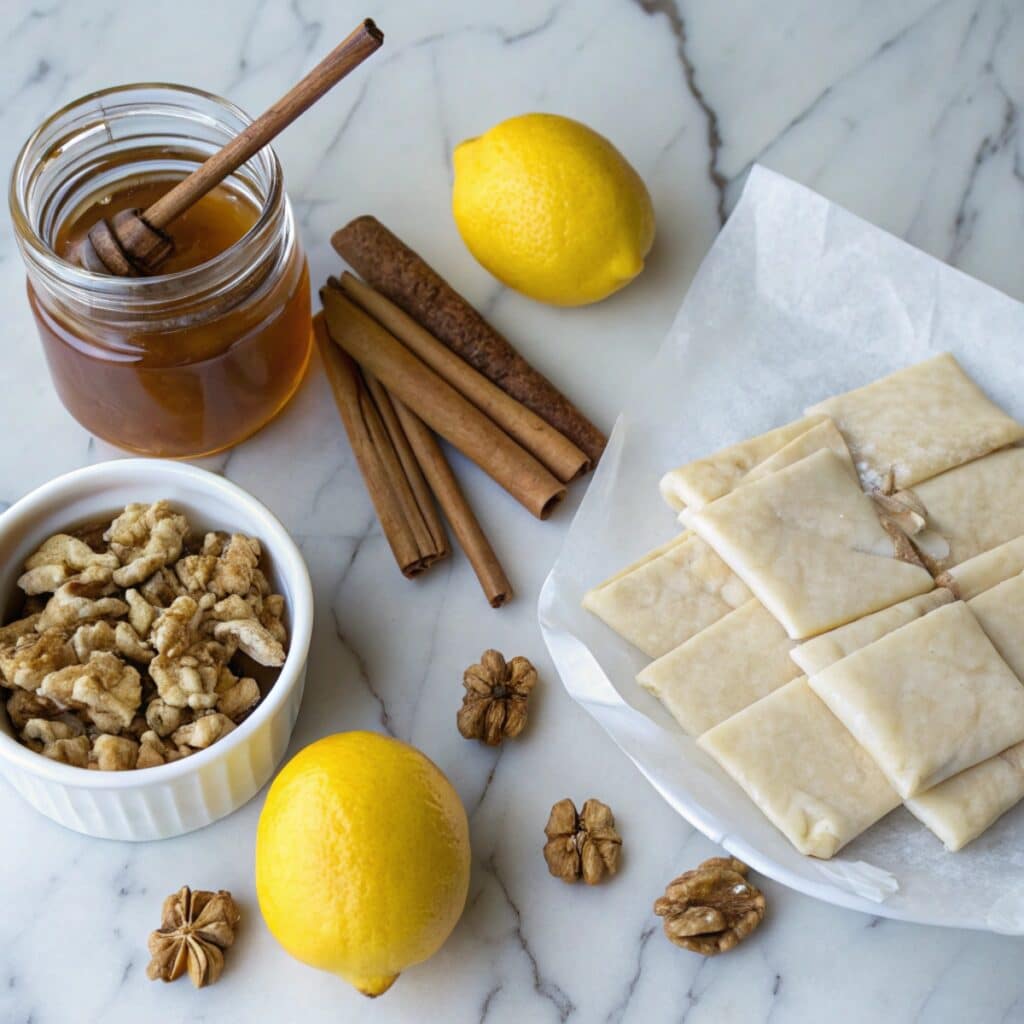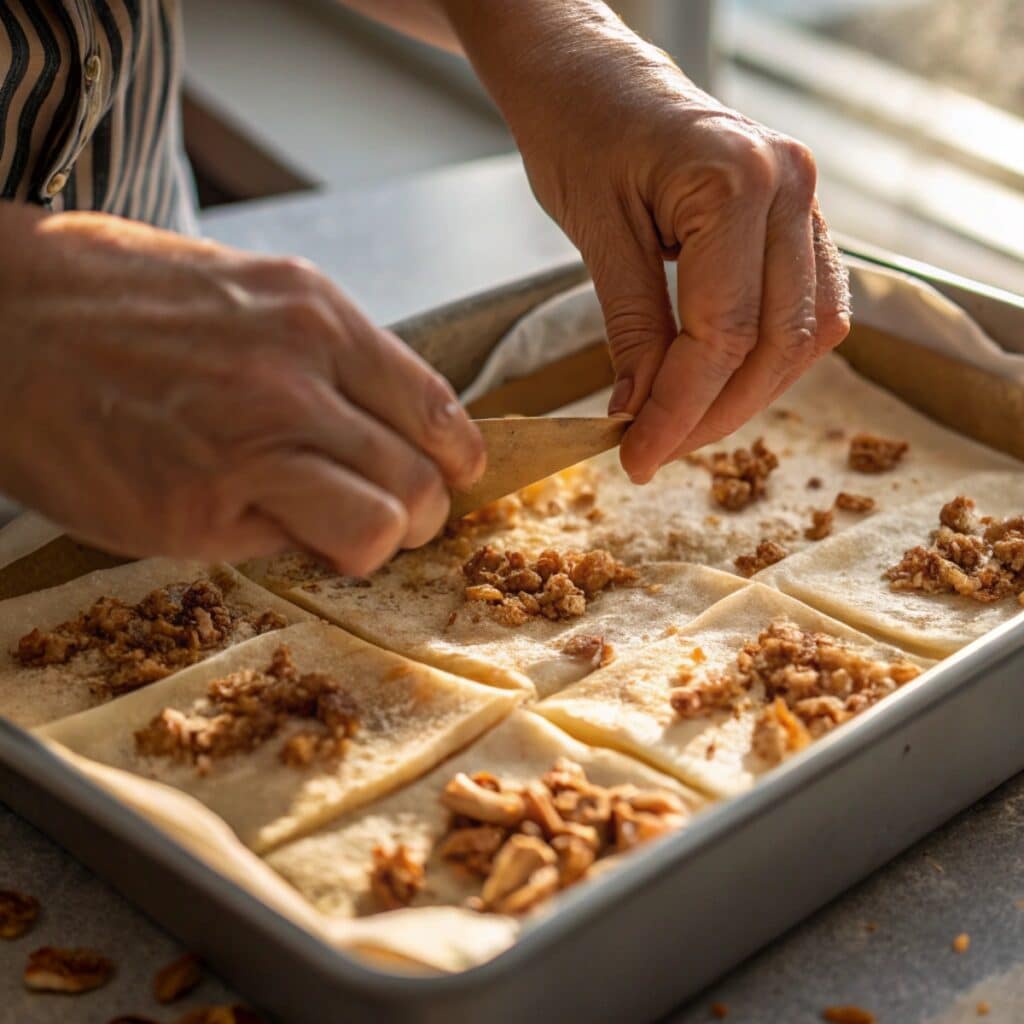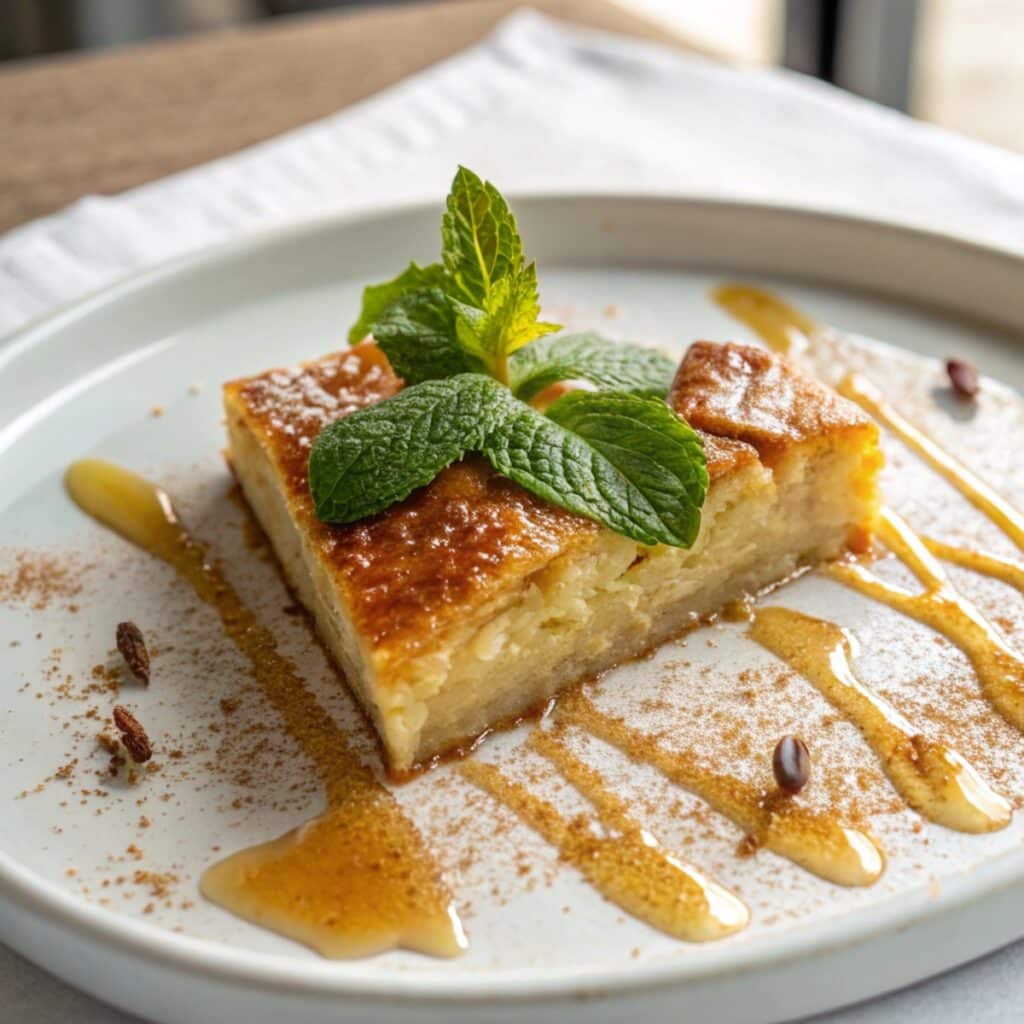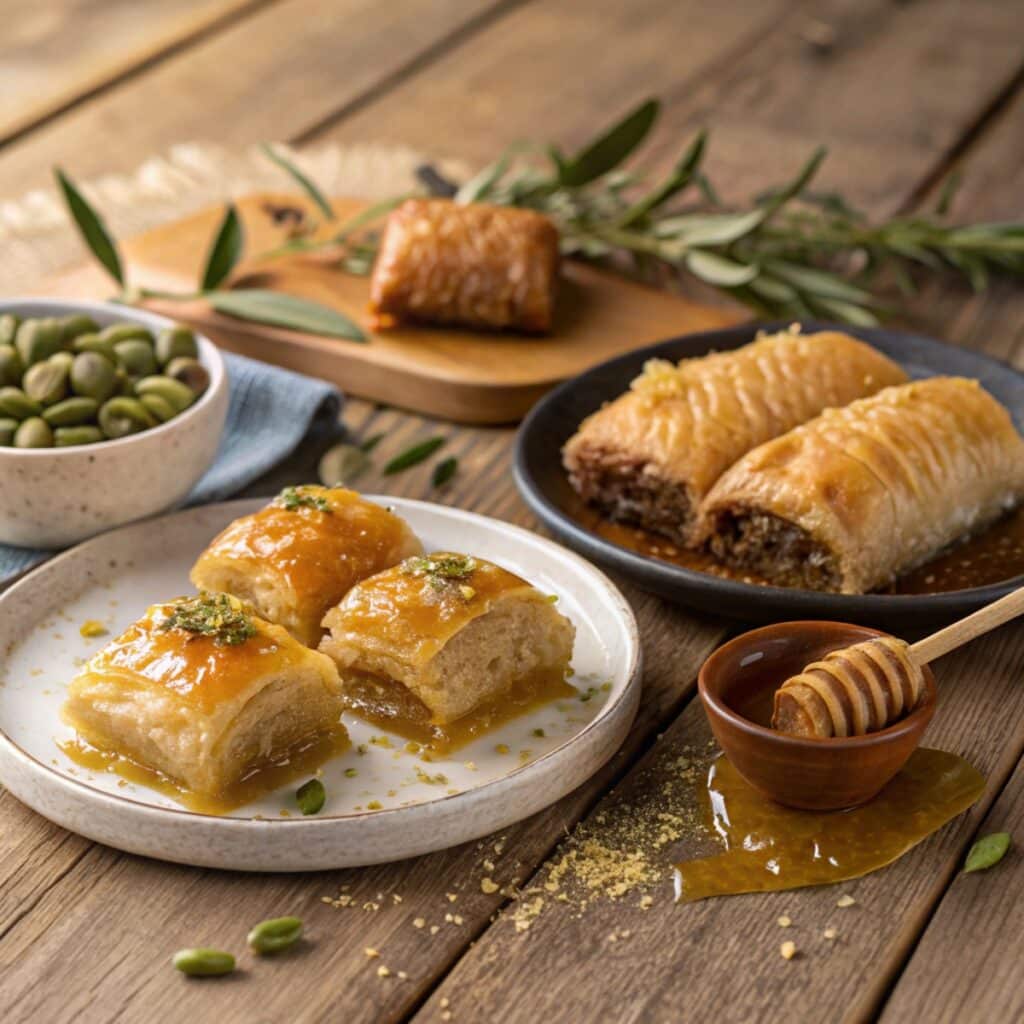Traditional Greek desserts have a way of capturing history, culture, and family traditions in every bite. These sweets tell stories of ancient customs and festive gatherings, wrapped in simple ingredients like honey, nuts, and spices.
This article will explore some of the most beloved typical Greek desserts, uncovering their origins and what makes them special. Whether you want to try authentic recipes or learn about these classic treats, this guide will walk you through everything you need about traditional Greek desserts.
From baklava to galaktoboureko, the flavors of Greece await you. For more inspiration, check out our collection of Greek dessert recipes and learn about Greek Easter desserts that unite communities.
Table of Contents
Traditional Greek Desserts – A Taste of History
A Personal Story with Traditional Greek Desserts
Traditional Greek desserts have always held a special place in my culinary journey. I vividly remember visiting a small bakery in Athens, where I tasted authentic baklava.
The layers of crisp phyllo dough, crunchy nuts, and fragrant honey were unforgettable. That moment sparked my passion to dive deeper into traditional Greek desserts and the stories behind them. These desserts are not just sweets but a connection to Greece’s rich heritage and celebrations.
Over the years, I’ve recreated many of these classics in my kitchen, always amazed by how these simple ingredients combine to create something extraordinary. A traditional Greek yogurt marinade will elevate your grilled chicken.
What Makes Traditional Greek Desserts So Special
Their use of wholesome, natural ingredients such as honey, nuts, citrus zest, and spices like cinnamon and clove sets traditional Greek desserts apart.
These ingredients reflect the Mediterranean climate and bring vibrant flavors that balance sweetness and texture. From the syrup-soaked kataifi to the custard-filled galaktoboureko, each dessert offers a unique experience.
Many of these sweets are tied to religious holidays and family traditions, like the special treats served during Greek Easter. You can discover detailed recipes for these favorites in our galaktoboureko recipe and explore the rich textures of Greek desserts kataifi.
Exploring Popular Traditional Greek Desserts
The Iconic Baklava and Its Origins
Baklava is arguably the most famous among traditional Greek desserts. This sweet treat is made from layers of flaky phyllo pastry, filled with chopped nuts, and soaked in fragrant honey or syrup.
While baklava’s origins are often debated, many agree it has deep roots in Greek culinary tradition, refined over centuries. Its rich, sweet flavor makes it a staple for celebrations and everyday indulgences.
Suppose you’re curious about perfecting baklava at home. In that case, you can find a detailed step-by-step guide in our Greek desserts baklava section. This dessert beautifully showcases the balance of textures and sweetness that define traditional Greek sweets.

Other Beloved Sweets and Variations
Traditional Greek desserts don’t end with baklava. Kataifi, another phyllo-based pastry, offers a different texture with its shredded dough wrapped around nuts and drenched in syrup. Then there’s galaktoboureko, a creamy custard dessert wrapped in crisp phyllo, loved for its comforting richness.
For those interested in exploring a variety of these sweets, our Greek dessert variations page provides an excellent overview of different recipes and regional specialties. Each dessert reflects a piece of Greek culture, from everyday treats to festive highlights.

Traditional Greek Desserts and Their Cultural Significance
Desserts for Greek Easter and Festive Traditions
Greek Easter is one of the most important celebrations in Greece, and traditional Greek desserts play a significant role. Sweet breads like tsoureki, often flavored with aromatic spices and decorated with red-dyed eggs, symbolize renewal and new beginnings.
Melomakarona, honey-soaked cookies spiced with cinnamon and cloves, and kourabiedes, buttery almond cookies dusted with powdered sugar, are staples on Easter dessert tables. If you want to learn more about these festive sweets, our Greek Easter desserts collection offers authentic recipes that bring this memorable holiday to life.
The Greek Goddess Dessert: Galaktoboureko

Among traditional Greek desserts, galaktoboureko holds a special place as what some call the “Greek goddess dessert.” This dessert features a luscious semolina custard baked inside layers of flaky phyllo, all drenched in syrup that adds just the right amount of sweetness.
Its rich texture and warm flavors make it a favorite for Greeks and visitors. For a detailed recipe to try this iconic dessert at home, check out our galaktoboureko recipe page, where every step is broken down for perfect results.
Frequently Asked Questions About Traditional Greek Desserts
What is a traditional dessert in Greece?
Traditional desserts in Greece often feature ingredients like honey, nuts, and phyllo dough. Classics include baklava, galaktoboureko (a custard-filled pastry), melomakarona (honey cookies), and kataifi (shredded phyllo with nuts). These desserts are deeply rooted in Greek culture and are enjoyed during holidays and family gatherings.
Is baklava Greek or Turkish?
Baklava is a beloved dessert in both Greek and Turkish cuisines, with both countries claiming its origins. While the basic concept of layered phyllo and nuts soaked in syrup is common, Greek baklava typically uses walnuts and a honey-based syrup, giving it a distinctive flavor compared to Turkish versions.
What is the traditional dessert for Greek Easter?
During Greek Easter, traditional desserts include tsoureki (a sweet braided bread flavored with spices and often decorated with red eggs), melomakarona, and kourabiedes. These treats celebrate the holiday and symbolize themes of renewal and festivity.
What is the Greek goddess dessert?
The “Greek goddess dessert” is a nickname often given to galaktoboureko. This rich dessert features creamy semolina custard wrapped in crispy phyllo and drenched in syrup, offering a luxurious and unforgettable taste experience that honors Greek tradition.
Conclusion
Traditional Greek desserts are more than just sweet treats—they are a window into Greece’s rich history and vibrant culture. From the honeyed layers of baklava to the creamy indulgence of galaktoboureko, each dessert tells a story of family traditions and festive celebrations.
Whether trying these recipes for the first time or looking to deepen your appreciation, typical Greek desserts offer a delicious way to connect with Greek heritage. I hope this guide inspires you to bring a taste of Greece into your kitchen and enjoy the timeless flavors that have delighted generations.
For more informations read our Poste on mediem about The Timeless Charm of Traditional Greek Desserts.





6 thoughts on “Traditional Greek Desserts: Authentic Recipes and Rich Flavors to Savor”
Comments are closed.